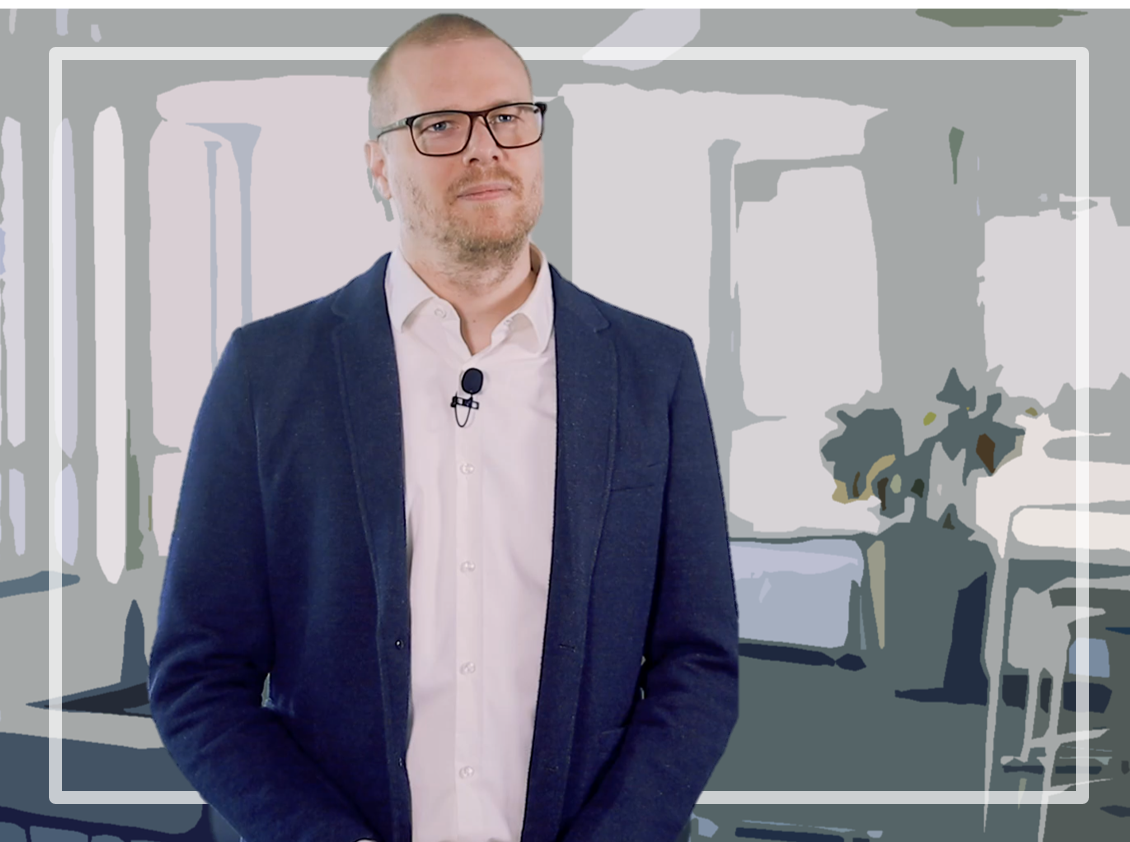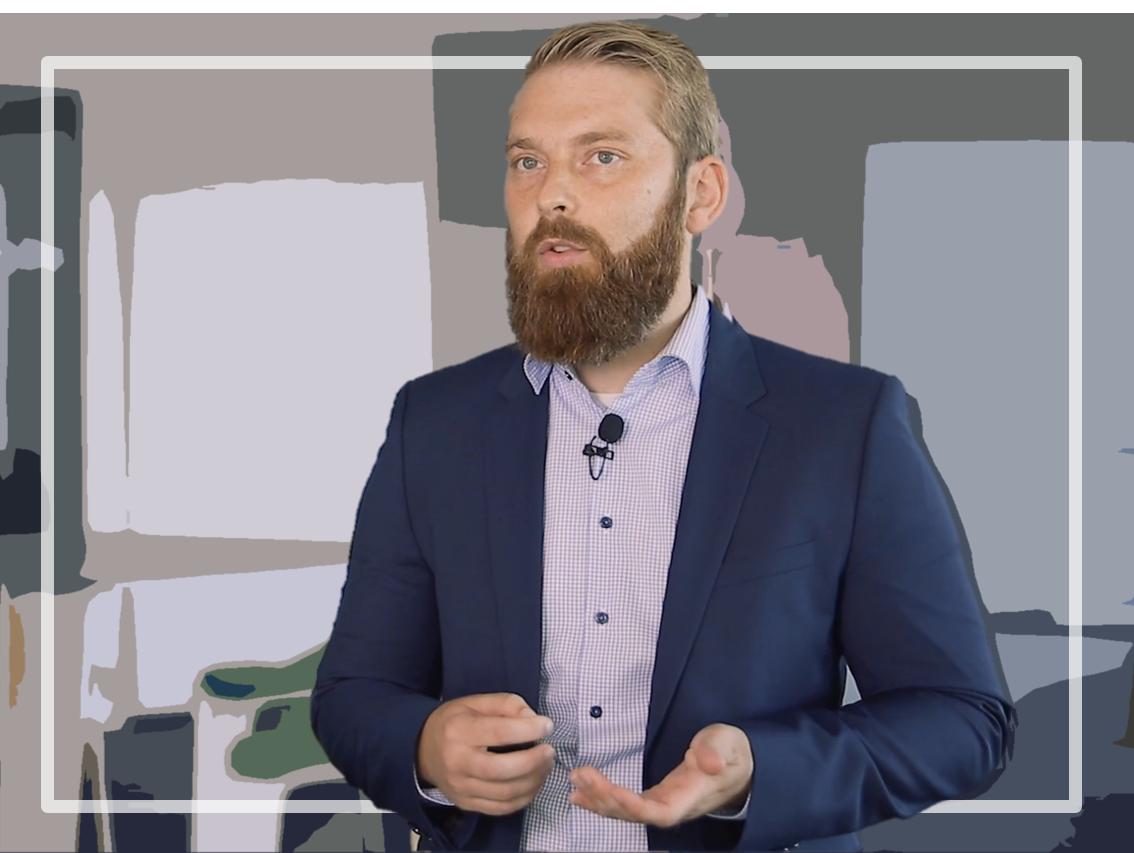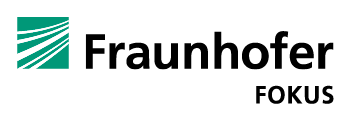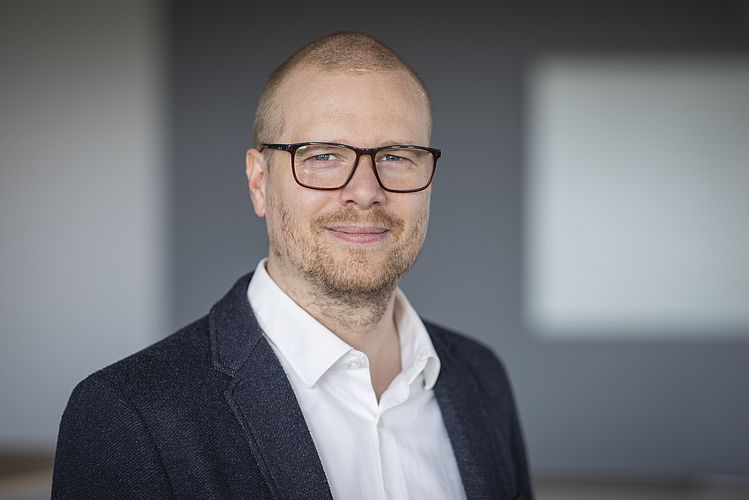The “yellow pages” of the energy transition
The researchers of the Fraunhofer Institute for Open Communication Systems (FOKUS) have developed an online platform for energy data and energy services in the scope of a WindNODE workstream. Algorithms will aim to discover new opportunities whilst creating added value from the large amount of energy data and services. In order to allow this vision to become reality, the researchers of the FOKUS Institute developed an online platform for energy data and services. Using blockchain technology, contracts can be made within the platform between the numerous participating partners.
Imagine that you have all data of the German energy supply on your computer. Granted, to begin with, you would need a larger computer, preferably as large as the Amazon computer centres near Frankfurt. Nevertheless, imagine that you know almost everything and you would be able to oversee who needs electricity (or heat) when, where and how much? Who produces energy when, where and how much? When does the wind blow? And who is flexible and able to shift the energy consumption by 15 minutes or an hour if needed?
‘That wouldn't be bad,’ emphasises Benjamin Dittwald, head of the WindNODE project Energy and Data Marketplace. Such an El Dorado of openly available data would be a scientist’s dream at the Fraunhofer Institute for Open Communication Systems (FOKUS) in Berlin. A data landscape in which the resourceful programmers can create new connections, such as between the foreseeable electricity surplus of a wind farm in case of a surging storm front and the operator of a refrigerated warehouse, who would be able to use this excess power to cool his stored goods as much as possible. Or, on top of that, between sunshine forecasts and the charging station of a large logistics company.

▶ Play
The YouTube video will only load and play after clicking. By clicking the video, you agree to Google's Privacy Policy.
Open-ended list for energy data
‘Within WindNODE, we developed a readily available open-ended list in which the players of the energy industry can provide their data,’ says Dittwald. Instead of a “Data El Dorado”, he suggests another term: ‘We want to create the yellow pages of energy supply.’
The web platform is publicly accessible at datenmarkt.windnode.de. Here, hundreds of data sets are stored: data on electricity feed-in at the high-voltage level in Berlin, the list of power plants in Germany, an overview of the Federal Network Agency (Bundesnetzagentur) with readily available charging stations for electric cars or the data of the German weather service. ‘This is several terabytes worth of data. There was a fair bit of groaning from our colleagues, as they had to expand the storage space in the computer centre,’ Dittwald remembers.
The project description of the WindNODE workstream affirms the following about the old world of energy data: ‘Nowadays, data exchange systems are often based on bilateral agreements and proprietary interfaces and data models that are not usually made available to third parties or can only be integrated at high costs.’ A yellow page directory, however, would enable the participants of the energy industry to network information technology in an area of any size or complexity. Companies that are currently seeking out new collaboration partners in a limited and analogous manner would be able to search for partners with complementary energy properties in this data catalogue without limitation, such as the refrigerated warehouse and wind farm operator. The matches on the energy and data marketplace of the Fraunhofer Institute will be exposed by developers in order to generate added value.
Retrieving data from their silos
What such matches and added value could look like is easily laid out in another project of the researchers at the Fraunhofer FOKUS Institute. In 2016, they overlaid data from Berliner Verkehrsbetriebe, accident data from the police, traffic data from the traffic management centre of Berlin and weather forecasts to eventually develop the smartphone navigation app Streetlife. Not only does it steer cyclists to the best possible route, it also directs them via the least accidentprone areas. If the weather is bad, it also advises them to take the underground instead. This was only made possible because all players involved released the data from their special silos and then combined them in a new manner using good ideas and smart algorithms.
‘Part of the charm of this approach is that communities can seek out connections thanks to fresh perspectives that would have otherwise been overlooked,’ says Dittwald. The hope is to determine hundreds of new flexibility and networking potentials in the German energy system amongst the released energy data, beyond the wind farm and refrigerated warehouse. New IT companies or professionals in existing energy companies could also develop new services and business models based on these capacities. In Dittwald’s words, the data and services should in this way be ‘networked intelligently within the meaning of a platform economy’. This could create new markets that make for a smoother energy transition.
The software is running…
All that being said, many hurdles still need to be tackled if this vision is to be successfully achieved. Not only from a regulatory and legal perspective, but technical IT obstacles also need to be overcome. First, the data outlining energy-relevant properties need to be standardised so that they can be connected in the first instance. ‘For an open-ended list, data need to be formatted in a uniform manner or illustrated by metadata so that they can be processed more easily,’ Dittwald explains.
Metadata communicate how the available set of data and figures must be interpreted. Where is the title of a data set located? Where does it display what this data set is about? Where can you find the numbers that are relevant for the energy industry? The metadata also specify the source of the published data and what legal licence they are subject to.
In the energy data and energy service marketplace at datenmarkt.windnode.de, the researchers of Fraunhofer FOKUS for instance added load data from installations in Berlin’s Siemens factories. Siemens and its machinery are involved in their own WindNODE project (‘Controlling industrial load management as a whole’).
‘We can see the consumption of load installations in 15-minute cycles,’ says Dittwald. A current date is connected to the load profile along with linking information to the specific installation. From this data, assumptions can be made regarding flexibility, and a provider can consider whether or not to offer electricity for this particular load profile.
In the case of Siemens, the data were submitted in the prevalent CSV format. These are comma-separated table data in text format. Other data are available in the form of Excel, XML or JSON, a widely used and preferable IT format.
The weather data of the German weather service were also made available as CSV files and written in the same syntax. ‘Now, the data can be correlated, and one can consider to time the machines in such a manner that they consume energy when there is an abundance of electricity from weather-dependent renewable energy sources on the grid,’ says Dittwald.
… but the data are missing
To make the data available to third parties on the marketplace, the Fraunhofer researchers offer access via a program interface. This Application Programming Interface (API) also makes it possible for energy companies to provide other data without having to transfer them to the Fraunhofer server. This is particularly important for data that are constantly updated. ‘The database is a distributed system through which one can access the data market but that is essentially located on many servers within the network,’ says Dittwald.
The technology is currently up and running. ‘The nourishment for the database is, of course, the data, which need to be provided by the companies on the energy market,’ says Dittwald. And here, a rather restrictive rule applies in the energy industry, ultimately, no data are published regarding critical infrastructure and customer data. Any exceptions to this are only made following a systematic case-by-case basis.
For a marketplace for energy data and energy services, hypothetically it’s imagining that the city would make the central square available for the weekly market and no merchants would show up.
That is why Dittwald would like a paradigm shift towards the principle that energy data are generally published and only withheld when it would contradict the actual interests of the economy, security technology or data privacy law.
What is possible in such exceptional cases, could be observed during the Open Data Hackathons organised by Stromnetz Berlin. During these events, programmers overlaid the line grid data of Stromnetz Berlin and the current consumption data over a single weekend. This resulted in a smartphone app. When the user points the smartphone camera at the street, the screen shows the power lines underneath the asphalt, including their current load, indicated by different colours. ‘On such a map, one could also place a virtual energy storage system or a power plant in order to comprehend the potential effects on the environment,’ says Dittwald.
Blockchain for flexibility trading
Bringing fluctuating electricity supply from weather-dependent wind and solar power generators together with flexible energy consumers: this is one of the greatest challenges of the energy transition. How blockchain can contribute to this trade is demonstrated by Berlin’s Fraunhofer Institute FOKUS.
Philipp Lämmel sums up the challenge: ‘We have to achieve that a certain load does not always consume electricity at the same time, at around three in the morning, but rather also at eight in the evening.’ As part of WindNODE, the researcher of the Fraunhofer Institute for Open Communication Systems (FOKUS) strives to answer the question of how blockchain can be used for the contracts between energy suppliers and consumers.
The potential is colossal: ‘Blockchain could play a central role in the digitalisation of the energy system as the transaction technology simplifies the
exchange, the validation and the documentation of data,’ according to the German energy agency dena. ‘Blockchain can be used for contracts in the same way as the internet is used for information,’ American IT group IBM promises. Here, blockchain acts as an open transaction log that can be accessed by all business partners and cannot be altered single-handedly. As a result, direct and secure trading among thousands of suppliers and consumers becomes possible.
Electricity trading from neighbour to neighbour
One famous energy industry project is that of New York borough Brooklyn, in which households with a solar installation could sell surplus electricity to their neighbours and pay each other in their own digital currency. The revolutionary aspect is that direct trade could, in theory, make local electricity traders redundant. ‘Blockchain has a disruptive potential, like Uber for the taxi market, job exchanges for the newspaper ad market or video platforms for the traditional regional pay TV,’ Lämmel explains. Blockchain could make the middleman, the broker, redundant.
For the energy industry companies, this is both a threat and a potential new business segment. ‘Blockchain has only been acknowledged and taken seriously in the past few years. Today, no one can predict how it will be utilised in ten to twenty years,’ says FOKUS researcher Philipp Lämmel.

▶ Play
The YouTube video will only load and play after clicking. By clicking the video, you agree to Google's Privacy Policy.
Operating system for contracts
To enlighten the technical aspect of blockchain, it is often described as an operating system that was developed specifically for the mutual conclusion of contracts with a large number of contract partners. In the technology world, it can be comparable to Microsoft Windows as the operating system for PCs or Android for smartphones. Just like how there are different operating systems from different manufacturers, the ‘blockchain’ operating system is also offered by various developers. Ethereum, the blockchain used by WindNODE, is a ‘global open-source platform for decentralised applications’, which is supported by a foundation whilst developed by a world-wide community.
The data are saved in blockchains in a constantly lengthening chain of digital blocks. The more transactions are recorded in a new block each time.
The new information is then linked with the previous end of the chain, similar to the replication of genetic information. However, the constant generation of new blocks in a giant network of distributed computers also leads directly to one of the greatest disadvantages of all blockchain systems; the power consumption of blockchains with proof-of-work as consensus algorithm is off the scale. To put it into perspective, the famous Bitcoin blockchain alone consumed as much electricity in 2018 as all of Austria, according to the Commission of Experts for Research and Innovation of the German government.[1]
[1] EFI Report 2019, page 85, left column.
Blockchain – quick and easy
For WindNODE, Philipp Lämmel and his colleagues at FOKUS set up a private Ethereum blockchain and configured it so that it saves offers. ‘In our case, these are flexibilities for which a participant offers to take off or supply a fixed volume of electricity for a specific period,’ says Lämmel. When two participants in the blockchain agree on a trade, this ‘contract’ is saved as a transaction in the blockchain.
The multiple linking makes the contract inviolable. To make it possible for a participant to lodge an offer, he must use an electronic key, known only to him, as proof.
‘The most important aspect that we were able to demonstrate in this research project, is that blockchain can be used for flexibility trading quickly and only basic IT skills are required,’ Lämmel explains.
An option for the future
The WindNODE blockchain was not devised for private trading of solar power, but for the transmission and distribution grid level. ‘In principle, solutions for flexibility trading are already underway,’ says Lämmel. However, these solutions are always centrally organised and require the market participants to agree on a central entity that is trusted by all participants. However, this is not the case for blockchain: because all transactions are tamper-proof, this “decentralised haven of trust” replaces the central marketplace operator.
After the contract is signed between parties, the trade can now be settled in the Ethereum cryptocurrency, the exchange rate of which was around 500 euros per ethereum in November 2020. In principle, however, the trade could also be linked to a currency such as the euro. Lämmel: ‘This is more expensive but would eliminate financial risks due to fluctuations in the exchange rate of digital currencies.
Blockchain energy consumption must drop
In the meantime, solutions were also programmed to counteract the high energy consumption. On the one hand, own small networks with a specific purpose are not as energy-consuming as a world-wide distributed open network. By using the Ethereum software, one also endeavours to secure the trust in the accuracy of the operations, not only by the high computational intensity (so-called proof-of-work concept), but also financially by the participants (proof of stake). ‘We will experiment with this in the future,’ says Lämmel.
Even if he has proven that blockchain is practicable and can be useful within the energy industry, Philipp Lämmel still does not believe that it will be used in the energy sector any time soon. From a technological standpoint, blockchain is still too young for the responsible parties to use it in critical infrastructure. Lämmel: ‘But in another five to ten years, it may be considered as an adequate outlet.
3 questions for...
How has the cooperation within WindNODE furthered your research and which projects did WindNODE initiate?
Dittwald: WindNODE predominantly provided the resources needed to develop this web application for the energy industry, and this work also ties into other projects. The technology stack of the energy data marketplace is currently being used in the European data portal as well as other European and national projects. We’re even taking it one step further here. Not only are we providing the community with data in the hope that someone will use them to create value-added services, but we are also already offering such tools on the data platform. These are data visualisations, like the combination with local data.
What was the result of the exchange with other WindNODE partners?
For us as researchers in the field of IT communication, it is extremely interesting to gain such deep insight into the energy industry and to learn the rules of play, to which this sector functions. We now understand the hurdles for open data solutions. Thanks to this knowledge and understanding, we will be able to positively implement these experiences in the future. Using the experiences from WindNODE, we will now also start various standardisation activities, particularly in the Energy Blockchain working group of DKE, the German Commission for Electrical, Electronic & Information Technologies of DIN and VDE.
Is there a visitor site where one can now view the work results?
The Energy Data Marketplace can be viewed online at datenmarkt.windnode.de, and at Stromnetz Berlin one can also access the Open Data Portal. There is also a visitor site at the Fraunhofer FOKUS Institute in Berlin-Moabit, for which groups can register. We have a demonstrator for flexibility trading and its effects and an additional one for the energy data market.



